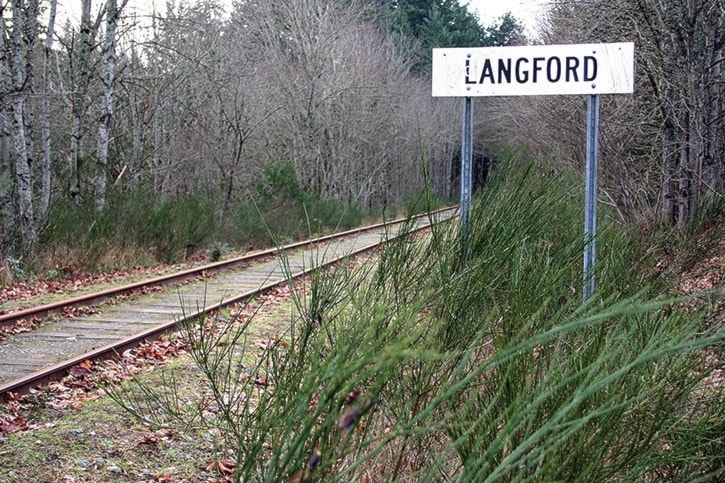Re: Passenger rail needs teamwork (Our View, Dec. 26)
Your editorial is correct, there needs to be a tight partnership between all organizations involved in planning, owning, financing and operating the E&N before service can be restored. Only then can the railway truly live up to the potential which its advocates argued it has when they campaigned against its threatened abandonment in 2001-02.
The first step is to create an interim framework: Southern Rail providing the commuter and intercity rail for VIA Rail under Island Corridor Foundation auspices. Once the operation has demonstrated its value, a permanent framework can then be formed to plan and execute service expansion.
The second and simultaneous step is to decide on a Victoria terminus. The success of the E&N hinges on the location. The only sound choice is at the west end of the Johnson Street Bridge where the city centre is visible and accessible, including by foot. The site also would permit a future extension of rail into the downtown.
In contrast, having the depot by the Roundhouse or Mary Street in Vic West, as some Victoria city councillors are supporting, will cripple E&N ridership, particularly commuter rail, because such out of the way locations will require time-consuming transfers to shuttle buses and vans. E&N patronage sank after the CPR moved the depot from Store Street to that vicinity in 1972, following the extension of Pandora Street to the Johnson Street Bridge. The subsequent public and political outcry led to the return of E&N/VIA service to Store Street, on a much smaller site, in November 1985.
The third step would be to look at the options for commuter rail, but also rapid transit. The province has balked at light rail transit’s $950-million price tag. The bus option it is leaning toward will not attract many new passengers, nor will it attract green transit oriented development; bus lanes can disappear in coats of paint.
The E&N route is the best option for rail transit because it uses the existing right of way and is the only option to serve the critical Esquimalt dockyards and military employment markets. Unlike Uptown, on Highway 1, Esquimalt has no rapid bus alternatives. The E&N also can serve Victoria General Hospital with a short shuttle service.
But the E&N commuter rail potential is hampered by limited frequency (every 30 minutes) and by its inability to penetrate the city centre, such as to the Legislative Precinct, as the equipment used is typically unsuited for street running. The old Store Street site is too far from most employment and commercial activity.
There is an alternative to commuter rail and LRT: TramTrain, also known as diesel light rail (DLR), which merits study. Using lightweight, low-emission, articulated and accessible vehicles, TramTrain/DLR could safely travel on-street, thereby reaching city centre destinations without transfers. They are equally suited for and are used in commuter, intercity (like Vancouver Island) and rapid transit scenarios. For those reasons, TramTrains/DLR is slowly gaining popularity. It is in service in Ottawa; Austin and Denton, Texas; between Camden and Trenton, New Jersey; and in such European cities as Zwickau, Germany.
On the E&N, TramTrain/DLR could provide LRT-like rapid transit, commuter and intercity rail for a much lower cost – even with a new Johnson Street rail bridge – than building LRT on the Highway 1 corridor. TramTrains could operate four to seven times an hour between Langford and Victoria, using short passing sidings, and two to three times a day from up-Island points.
TramTrains are suitable replacements for the cumbersome 1950s-vintage VIA Budd cars. At least one supplier’s design has been approved by the U.S. Department of Transportation to share the same tracks as freight trains, and the cars can be specified to include bike racks, toilets and Wi-Fi. Canada tends to follow, but is usually more flexible than the USA.
Should a study recommend TramTrain/DLR, and the province, CRD, and Ottawa agree to fund it, the best framework is an Island-wide transportation authority. This agency would take responsibility for buses and local ferries and integrate them with the E&N. The result would be an attractive and sustainable alternative to car commuting and sprawl by enabling green travel and development.
Brendan Read is a former Victoria and Courtenay resident and co-founder of the SaveRail Coalition.
